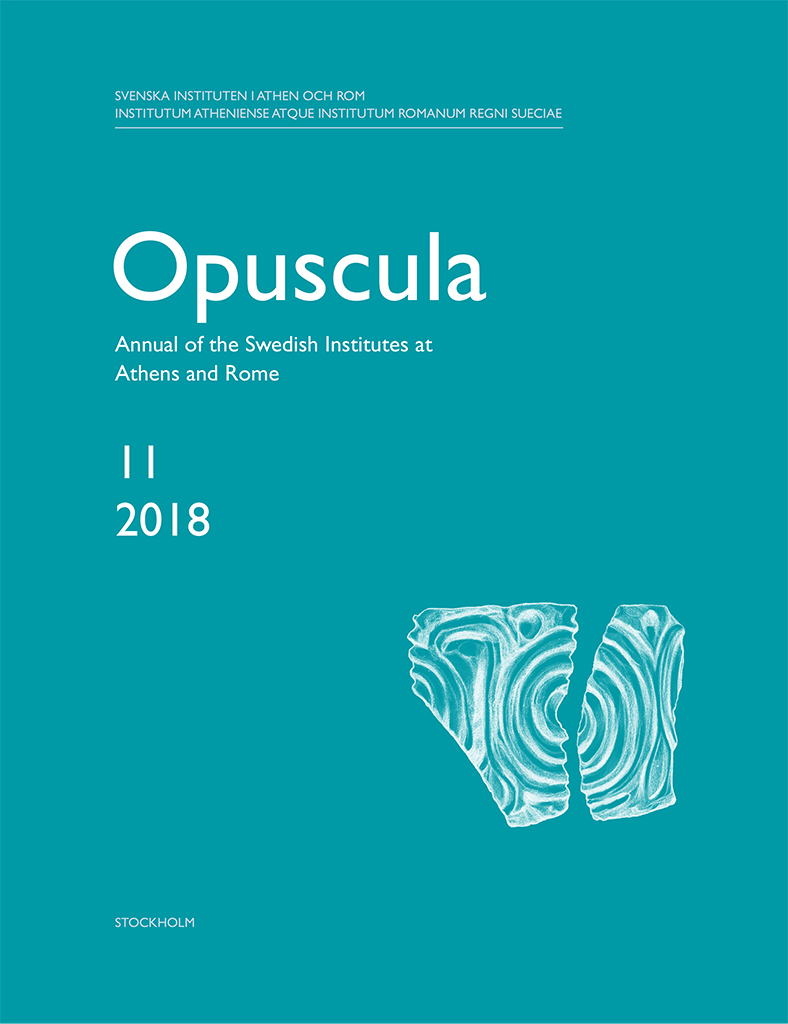Opuscula 11 (2018) is available for purchase at Amazon.com, Adlibris, Bokus and bokorder.se. Distributed by eddy.se ab. Two Early Helladic II terracotta rollers from Asine and their glyptic context By Michael Lindblom (Uppsala University), Gullög Nordquist (Uppsala University) & Hans Mommsen (Universität Bonn). Abstract Two Early Helladic II terracotta rollers from the Third Terrace at Asine are presented. The objects, used to impress relief decoration on pithoi and hearths, are unique in that no other examples are known from the Early Bronze Age Aegean. Their origin is discussed based on chemical characterization and their depositional contexts are reviewed from an archaeological perspective. Although there are no known impressions from these rollers on pithoi and hearths at Asine, it is shown that their owners surrounded themselves with different objects featuring similar glyptic impressions. Two such impressions find identical parallels at Tiryns and the combined evidence strongly suggest that Asine was the home for one or several potters who produced Early Helladic impressed hearths and pithoi. Bibliographical information Michael Lindblom, Gullög Nordquist & Hans Mommsen, ’Two Early Helladic II terracotta rollers from Asine and their glyptic context’, Opuscula. Annual of the Swedish Institutes at Athens and Rome (OpAthRom) 11, Stockholm 2018, 81–96….
Opuscula 7 (2014) is now available for purchase and free download at Bokorder.se. Also available at Amazon.com, Amazon.de, Bokus.com and Adlibris.com. A note on domestic vs communal grain storage in the Early Helladic period By Monica Nilsson Abstract This paper sets out to propose an alternative model of economic management at settlements of Early Helladic I–II date, where evidence of socioeconomic hierarchies is not prominent in the archaeological material. It is suggested here that the remains of certain original structures within the boundaries of settlements were once granaries which served the whole community. If this reading of the material is accepted, then communal storage seems to have supplemented domestic storage or constituted the sole method of grain keeping at a number of settlements during the initial stages of the EH period. The practice was then abandoned and, with one exception, after the EH II–III break there is instead a strong case for domestic storage only. A potential EH I–II communal management of basic food supplies thus carries wider implications for the interpretation of the general management of settlements. Bibliographical information Monica Nilsson, ‘A note on domestic vs communal grain storage in the Early Helladic period’, Opuscula. Annual of the Swedish…


